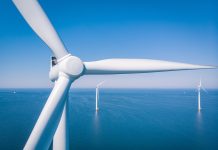It goes without saying that wind turbine parts are big — make that very big.
Moving those very big parts around a construction site can be a daunting task. Moving them around efficiently can be an even greater one.
Combilift, who recently celebrated its 25th anniversary, has been helping its customers successfully handle long and heavy loads, as well as maximizing storage and safety. With that expertise, the company has been working within the wind sector for years and continues to make advances to the industry.
“Combilift has been supplying straddle carriers and MGs for long and awkward loads for around 13 years,” said Paul Short, president of Combilift North America. “Obviously, the wind industry has a lot of heavy objects that are considerably long as well as a great deal of difficult-to-handle loads. We have been handling turbine blades, the nacelles, and the towers from very much the inception of the straddle carrier products and the MG product.”
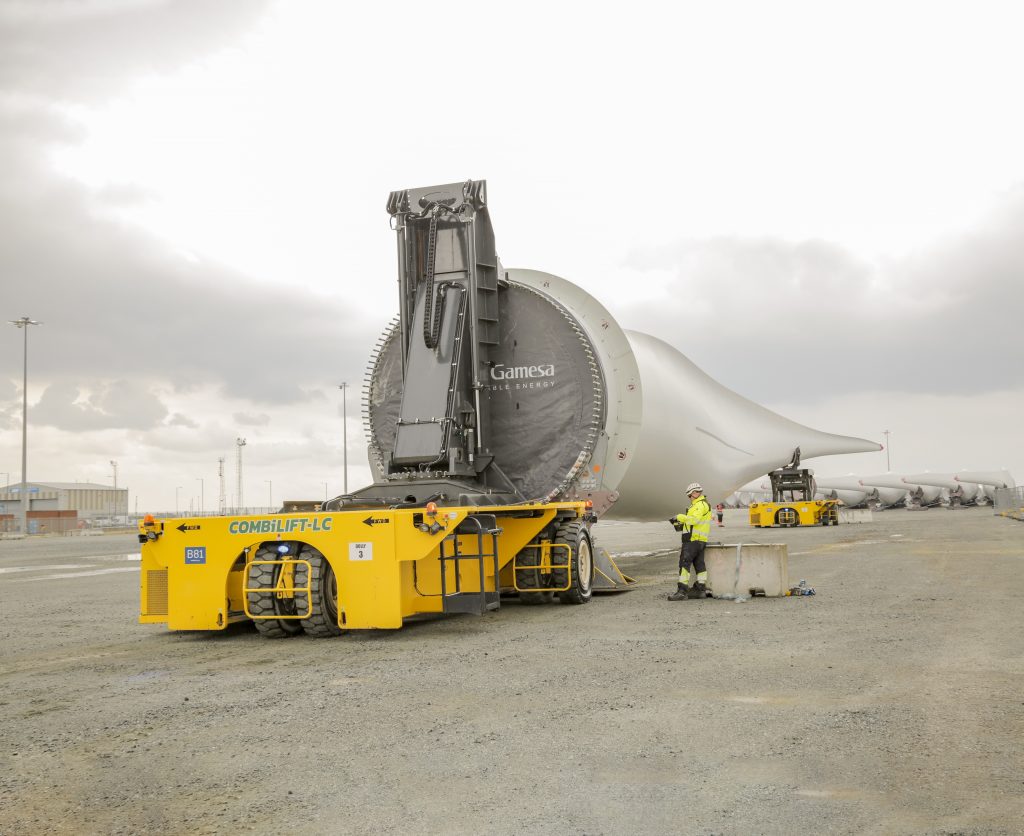 Newest load mover
Newest load mover
Not one to rest on its accomplishments, Combilift has taken that expertise to the next level while working with wind energy companies, according to Short.
“They’ve been telling us their challenges of handling these long blades that keep getting longer and keep getting more difficult to handle,” he said. “Through working with them and listening to them, we have developed products specifically for them to make it safer, more efficient, and so they can gain more storage of these long turbine blades, whether it’s at the production plant, port side, or in storage yards near construction sites.”
To that end, Combilift has developed its newest lifter, the COMBi-LC Blade , in collaboration with Siemens Gamesa, according to Short.
“It allows us to store the products very, very densely beside each other, and there’s no lost space in the storage yard, where, for example, a straddle carrier would have to straddle the loads,” he said. “It’s keyed onto the diameter of the turbine, allowing them to be stacked very, very close together. It’s very safe in that the load is completely held and supported over its length in the way that the manufacturer would like. The efficiency is that this can be done with one or two pieces of equipment that work together by a limited number of operators. It doesn’t need rigging; it doesn’t need banksmen; it doesn’t need a crane.”
Multiple operator options
This innovative piece of equipment can either be driven by an operator or controlled remotely, according to Short.
“There is an operator cabin, or it can be fully remote controlled,” he said. “For traveling long distances empty, the operator can enter the cabin and be enclosed in an air-conditioned or heated space, or they can, when they’re maneuvering the blade from production out through narrow alleyways or where they’re storing them in between other blades, they can do this by remote control and have full visibility of the product or the blade moving through the yard.”
The need for such a load mover becomes clear as blade lengths for offshore turbines continue to grow, reaching sizes of 115 meters or longer, according to Short.
“We’ve designed this for a number of blade lengths for the offshore wind industry as the blades are getting longer and longer,” he said. “We have a history of handling the shorter blades, but this is the newest version for handling longer ones, and it’s designed specifically for handling turbines. It’s a product designed to make manufacturing blades more efficient in handling these loads. It’s inherently safe by how it holds the load, how it supports it, and also safe for how it’s mounting to the blade.
It’s using its own mounting system to handle the blade, so there’s nothing that is touching it or damaging the surface. It’s being supported as the manufacturers designed so that they have a product that’s high quality through its material handling process.”
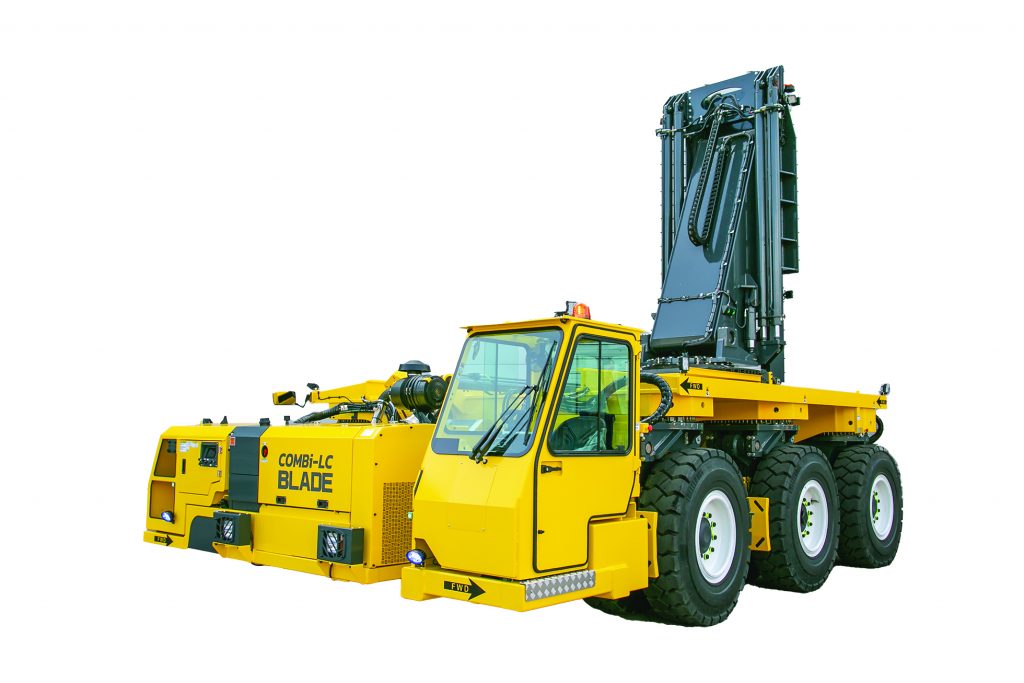
Works with any model blade
Although Siemens Gamesa worked with Combilift on the design elements, Short said the load mover is designed to work with any model of blade.
“Siemens Gamesa is the launch customer, and they’ve already ordered numerous units of these for different sites around the world, and as their research and development is continuing to produce bigger and better blades over time, we are confident that our over-spec Combi-LC’s will continue to be able to provide a safe and efficient way of transporting them for many years to come,” he said. “However, the load mover is available for anyone handling these wind-turbine blades for offshore wind farms, in the stock yards, port side before they’re loaded onto ships — anywhere that you handle these products efficiently. It’s available to anyone that needs it.”
Combilift’s latest innovation for the wind industry is just an example of how the company has a history of listening to its customers in order for them to do the most efficient work possible, according to Short.
“We don’t design products by sitting in a dark room coming up with ideas,” he said. “We listen to our customers. They tell us their challenges, and then we work with them and partner with them to bring a product that’s going to make their business safer and more efficient. It’s a collaboration. We want to make it safer for the manufacturing environment, and we want to make it safer for the operators who are working in the environment of the manufacturer, and we want to have a sustainable view of everything we manufacture, and, obviously, wind energy is a sustainable source for the future as well.”
Making good products better
That collaboration with customers is something Short said Combilift takes pride in because it often makes existing products even better.
“Normally, a customer has been using one of our products, or they see a product of theirs that could be modified to handle what they need, or there are challenging situations close to something that we do, but we start with a blank sheet,” he said. “We see if something in the portfolio will work or can be modified. If not, if it’s very unique, like handling a 150-meter wind blade, we design something from the ground up with that customer.
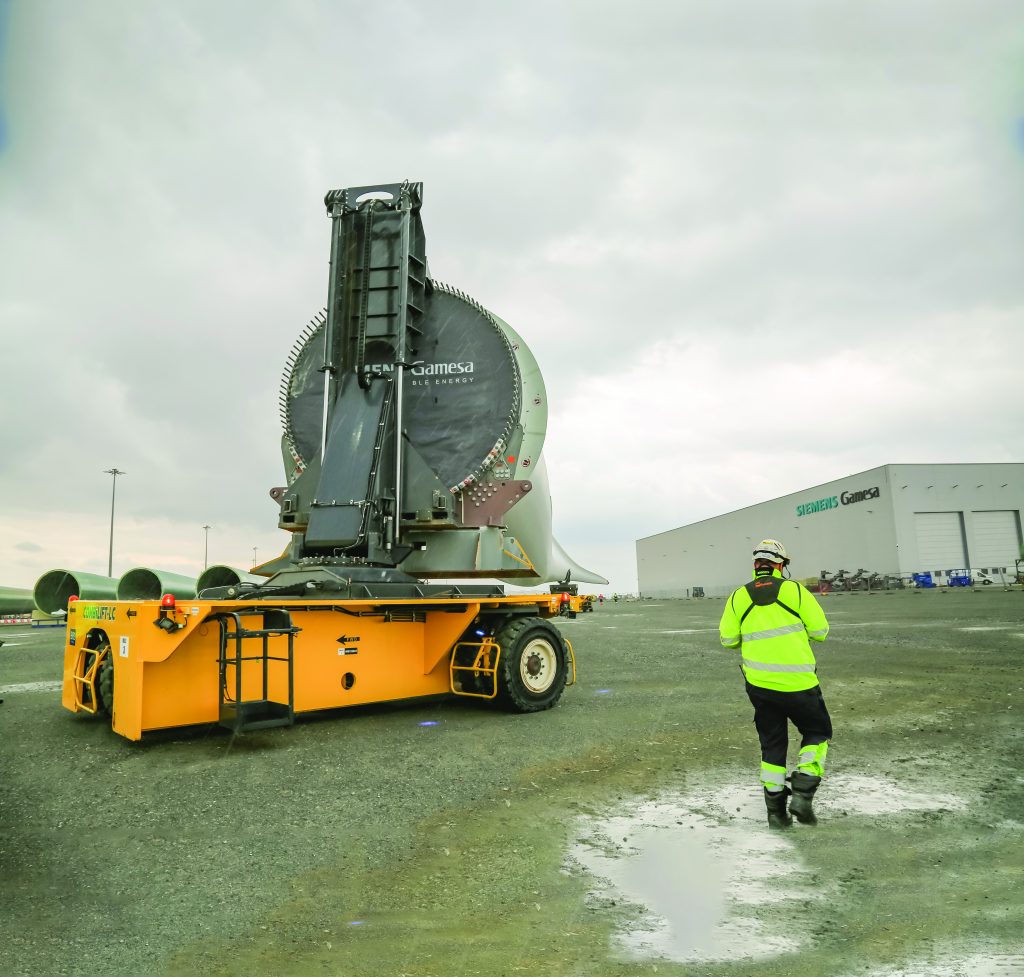
It’s very much a partnership; it’s a collaborative process, so it’s step-by-step working with them, coming up with a design, making sure that it’s going to fit within the manufacturing facility, and then listening to their operators on some of the handling challenges they’ve had in the past, and making sure we don’t incur them. If we can use their expertise to build something better, we will.”
Another point of pride for Short and Combilift is being able to employ people locally in Ireland — to date, those employees number 800-plus.
“We have customers here like Siemens and all around the world buying our products because of our engineering expertise and because of our manufacturing expertise,” he said. “Keeping everybody employed is a very, very proud part of our business. There’ve been many awards over the years for safety and innovation for which we feel honored, but I think having such a number of people employed in a rural area in Ireland is something the owners take great pride in. We run apprenticeship programs here to keep people interested and keep them coming through the business. A proud part of the business as well is the education of local people to join and have a career in the future.”
Innovative from the beginning
That success is even more impressive with the knowledge that Combilift is owned by two people from the area.
Combilift started in 1998 by Martin McVicar and Robert Moffett. Moffett had designed and built the Moffett Mounty, a truck-mounted forklift, now commonly seen on Home Depot or Lowe’s trucks all over North America and around the world.
He developed that truck, built it, sold it globally. However, in 1997, Moffett and his family sold the business to a public company. Before it was sold, Moffett had hired 17-year-old Martin McVicar for a summer internship, where he worked on the plasma cutter on the shop floor and drilling aluminum blocks.
McVicar was asked to design a part for the machine, which he successfully did. Three years later, he was head of engineering at Moffett Engineering. When Moffett Engineering was sold in 1997, McVicar was head of R&D. Having no desire to work for a public company, McVicar later approached Moffett with the idea for Combilift.
“They formed the business in 1998 and built the first Combilift multi-directional powered forklifts,” Short said. “And from there, 25 years later, that’s where we are now. We have a range of over 48 different products, most of them available in engine-powered or electric. We employ 800 people in our factory in Monaghan, Ireland, and about another 150 around the world. Our business is built on listening to customer challenges, customer problems, and then we find solutions for them, and they turn into products that we can sell around the world.”
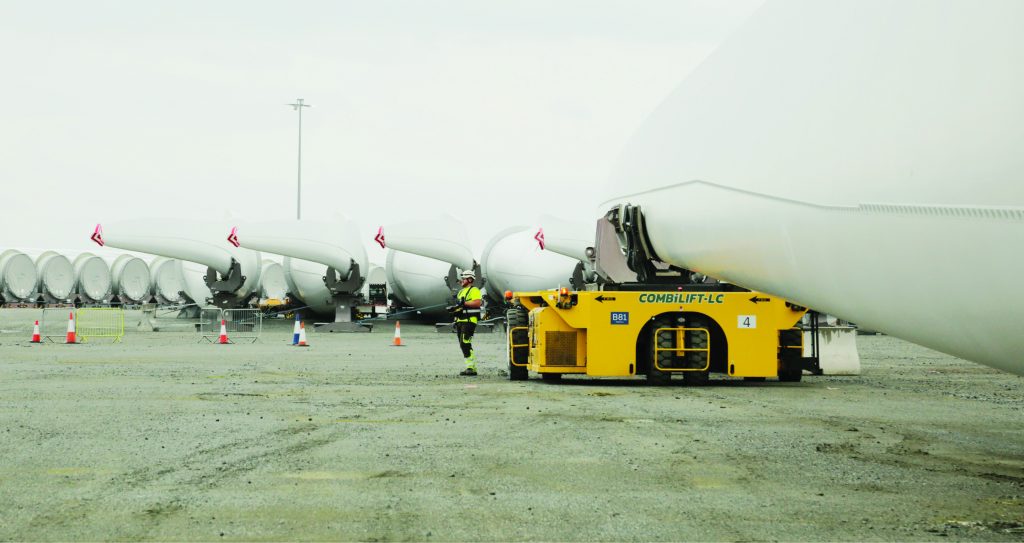
Future means more growth
Short said he only sees more growth for the future.
“We see the potential in North America,” he said. “I think our customers know where the big projects are going, and we have been a big part of the powered solution around the world. There’s a lot of untapped resources offshore in terms of the wind and wherever that’s going to be made available and regulations are going to allow, we see it growing quite rapidly as a very sustainable power source for many, many countries.”
And that growth will allow Combilift to continue to develop innovative products for a variety of industries, according to Short. “We definitely see ourselves coming up with more products — listening to our customers as they develop more and more innovation in their industry, so those partnerships are going to continue,” he said. “What that will lead to we only know by the betterment of the industry, but we’ll be there to partner with all those manufacturers and innovators within that industry to help them with their material end.”
More info combilift.com

















